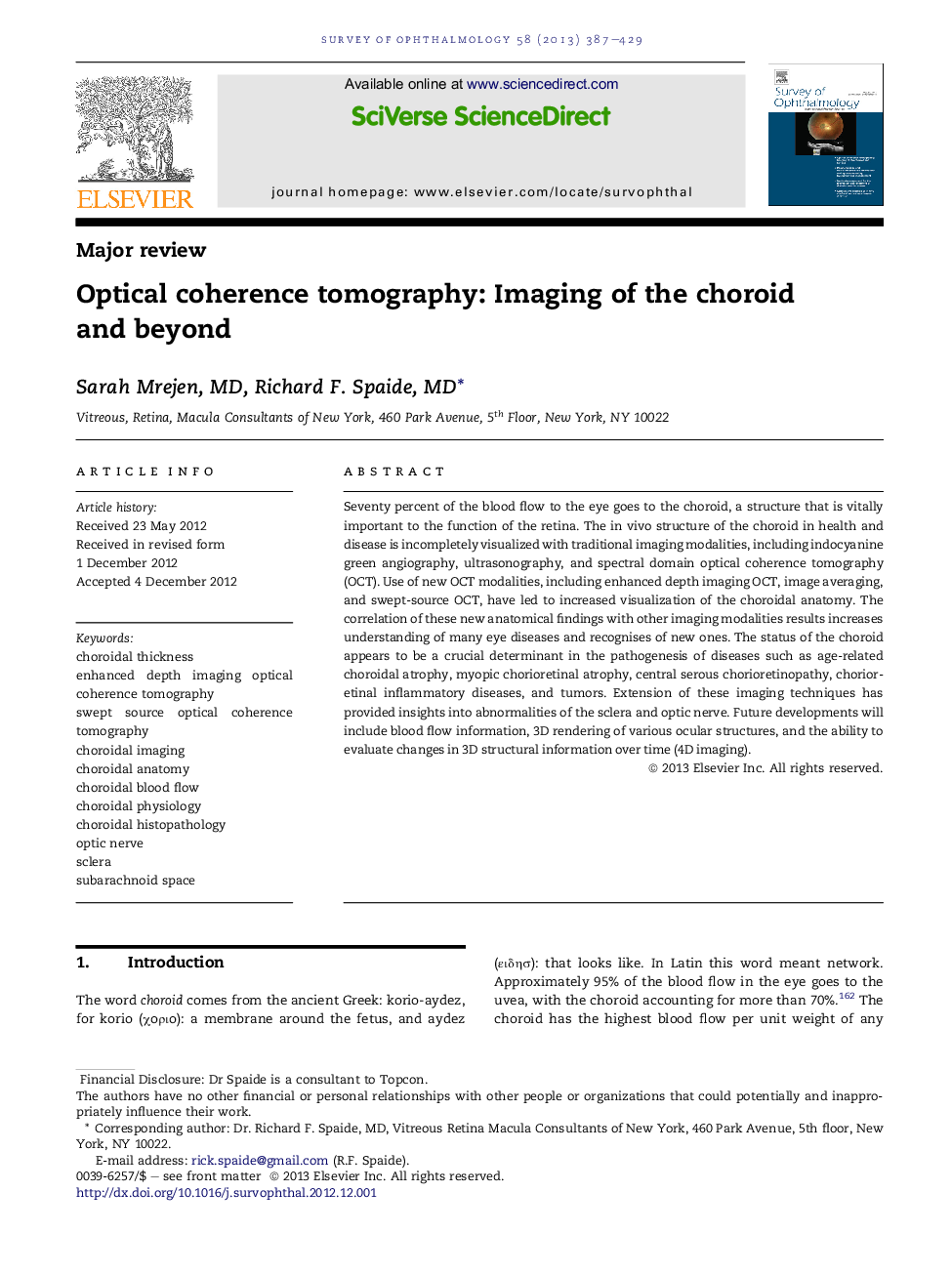| Article ID | Journal | Published Year | Pages | File Type |
|---|---|---|---|---|
| 4032599 | Survey of Ophthalmology | 2013 | 43 Pages |
Seventy percent of the blood flow to the eye goes to the choroid, a structure that is vitally important to the function of the retina. The in vivo structure of the choroid in health and disease is incompletely visualized with traditional imaging modalities, including indocyanine green angiography, ultrasonography, and spectral domain optical coherence tomography (OCT). Use of new OCT modalities, including enhanced depth imaging OCT, image averaging, and swept-source OCT, have led to increased visualization of the choroidal anatomy. The correlation of these new anatomical findings with other imaging modalities results increases understanding of many eye diseases and recognises of new ones. The status of the choroid appears to be a crucial determinant in the pathogenesis of diseases such as age-related choroidal atrophy, myopic chorioretinal atrophy, central serous chorioretinopathy, chorioretinal inflammatory diseases, and tumors. Extension of these imaging techniques has provided insights into abnormalities of the sclera and optic nerve. Future developments will include blood flow information, 3D rendering of various ocular structures, and the ability to evaluate changes in 3D structural information over time (4D imaging).
